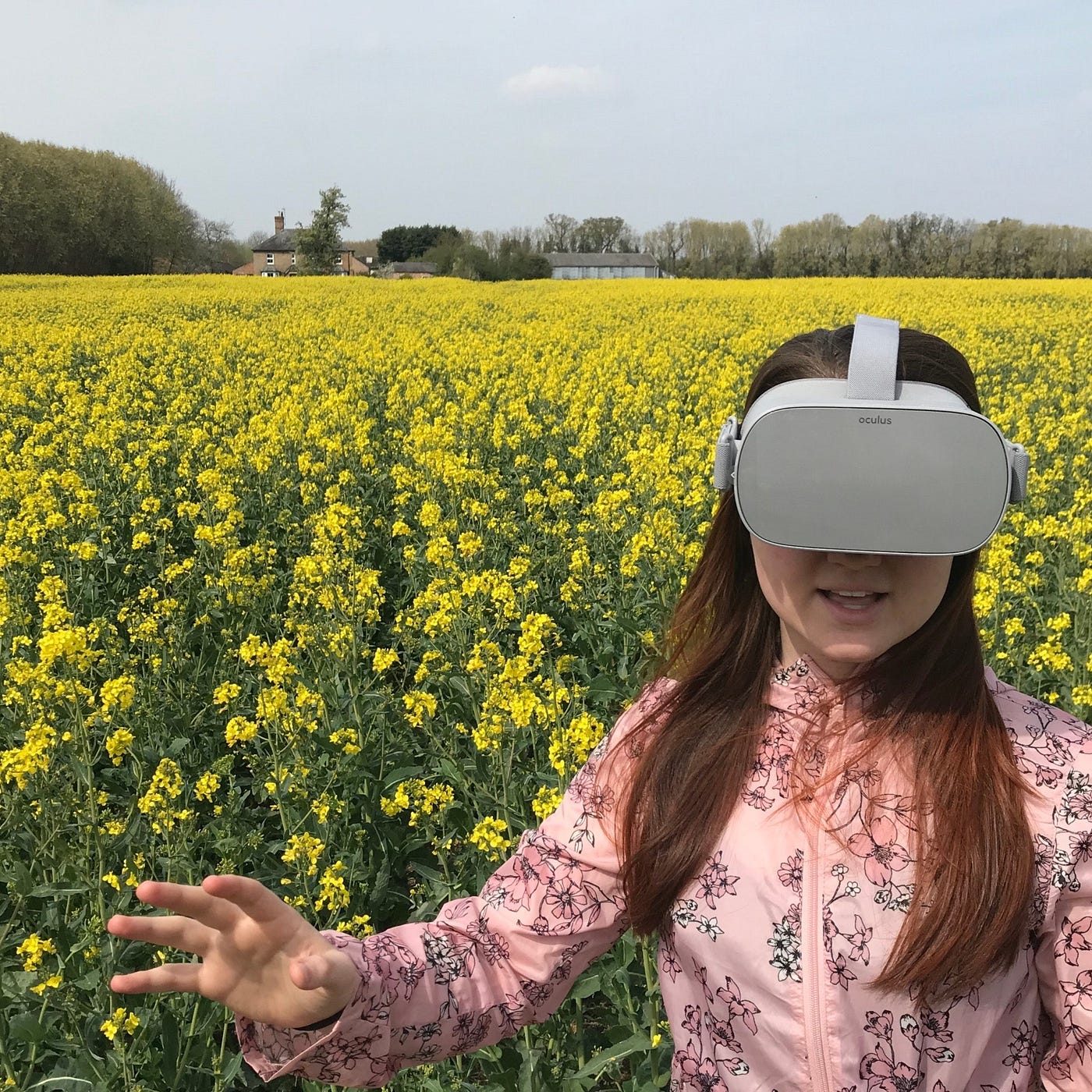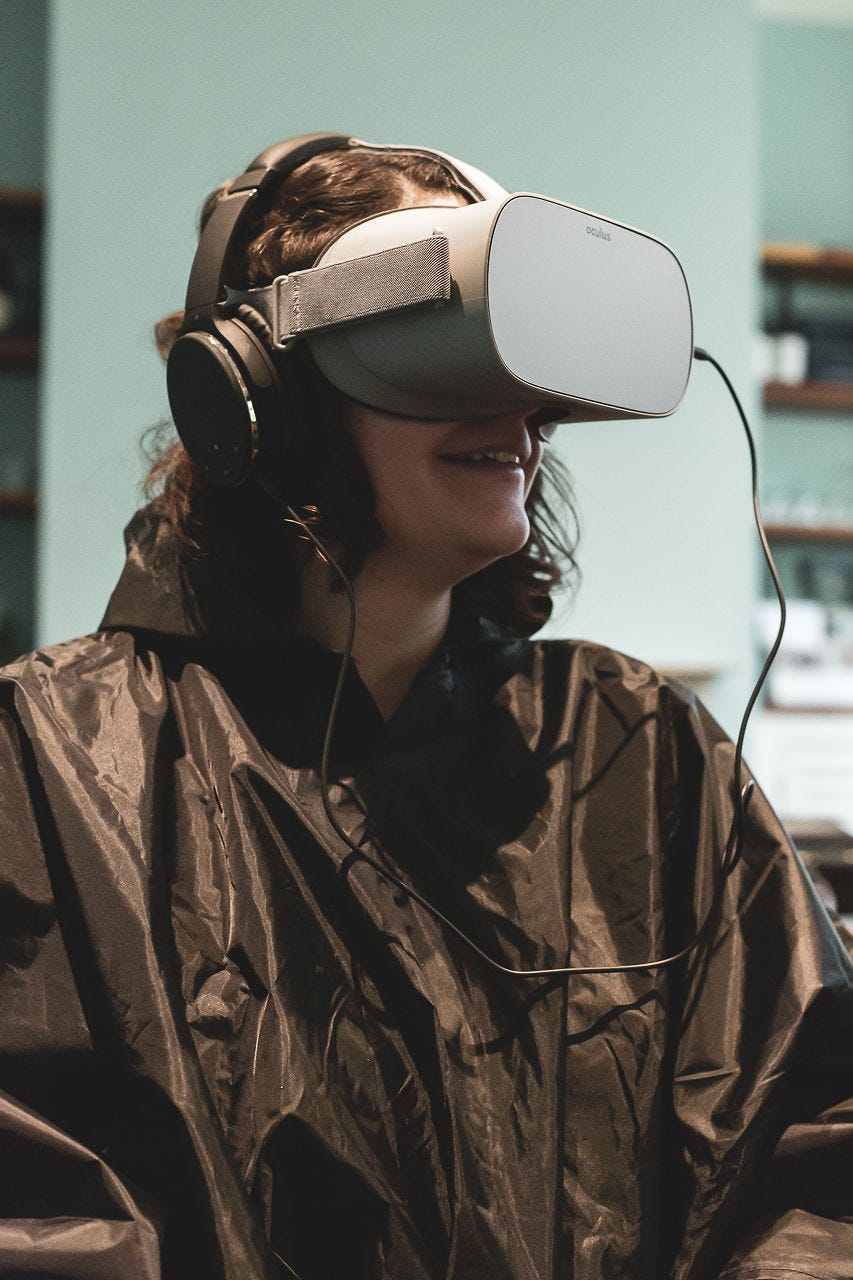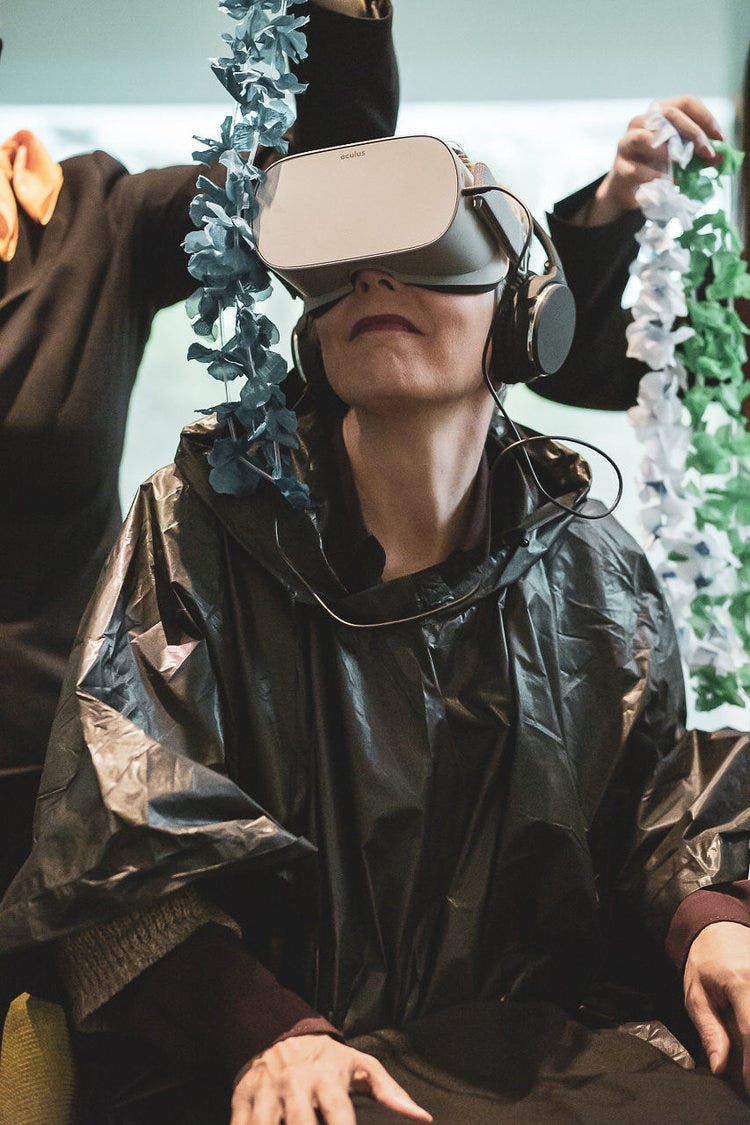Is ‘RawTransport™’ A Touch Too Far? (Review)
Electrick Village carries audiences away to destinations unsure


“Seems dubious.”
I’m standing outside a shipping container behind Waterloo Station and the man standing behind me with his date is skeptical of tonight’s show venue. Four of us have gathered at the end of Leake Street where the territory of the London VAULT Festival comes to a terminus. We watch the streams of evening commuters heading toward the station as a countering parade of out-of-town revelers buffet against the current toward the nearby quirky restaurants and pubs. As close as we are to Waterloo Station, it doesn’t feel like we’re about to travel anywhere and yet RawTransport™ promises to transport us far away.
Electrick Village (an “immersive, sensory VR theatre” duo of creators Carly McCann and Ben Grant) comes to the VAULT Festival in their sophomore year after debuting their first production The Extension in 2018 at the Wandsworth Fringe. RawTransport™ is advertised as an inspirational successor to their previous work, following the themes of virtual transportation and technological legacy. From my previous experience with immersive VR performances as well as attending “4-D” cinema screenings, I suspect there will be a large measure of sitting and having physical stimuli happen to me rather than much active choice in engagement.

A chirpy hostess greets us and welcomes us inside and we’re faced with a row of four chairs, VR headsets, and earphones. Her name tag bears my name and I wonder for a moment if this is another example of immersive theatre companies using public information about attendees to augment the experience (similar to Any One Thing’s Souvenir). Our hostess begins to brief us on the mechanics of digital transport but is suddenly interrupted by the harsh tones of her superior, the openly condescending designer of the system; he refers to her by a name different to the one on her nametag and in a moment — when we are completing legal release forms — I take the opportunity ask him about the misnomer. He dismisses the mistake by claiming that “one employee is just the same as another.” There’s no other reference to this for the remainder of the performance. Their dynamic is unnerving and disorienting; one is chipper and accommodating as she seats us and tucks blankets over our laps (it’s cold in the shipping container so we’re grateful for the comfort), while the other makes me feel like we’re interrupting his work.
It’s prudent to note here that five minutes into the half-hour performance is the first time the audience has seen these release forms; while there is a content warning on the web site regarding “bright lights and fast moving images, darkness, taste, smell and touch elements,” we haven’t received these forms ahead of time and are granted only a few moments during the narrative of the performance to review and sign them. I don’t see any safeword/gesture advice in the agreement, nor do I note being advised verbally, but I assume that I maintain my right to remove the headset and earphones if I choose to. As my hands and arms remain free at all times, physically I am fully capable of doing this.
When we’ve finally secured our headsets we are each handed a controller and instructed how to trigger the “start” of the experience at the same time as our other travelers, and then are advised to return the controls to our hostess once it’s begun. She counts us down and we engage; once the “travel” portion of the performance has commenced the actors are forgotten, as the sensory engagement takes the center stage. Vibrations, sounds, smells, touches, and even tastes are offered up as the digital environment changes around us. In the course of only ten minutes we’re spirited around the world; a 360-degree visual of several locations feels lush and all-encompassing. There’s a field of flowers that smells like spring, next a breezy glen, then there’s damp spray whipping up against my neck at the beach, shortly followed by a dazzling canopy of willow fronds that drape and tousle in my hair. As a passionate fan of ASMR I’m enchanted; during one scene, I actually feel genuine pangs of homesickness as a woodsy campsite materializes around me and I smell cedarwood and hear the twangy pluck of a banjo.
Get Shelley Snyder’s stories in your inbox
Join Medium for free to get updates from this writer.
SubscribeSubscribe
But alas, paradise lasts but a few moments: the siren call of the horror genre lures RawTransport™ away from simple blissful escapism. The narrative doesn’t veer wholeheartedly down the path of immersive VR horror (such as in producer The Tom Sawyer Company’s The Pendulum and The Incubus) but it seems to want to. The insidious tension-inducing tactics Electrick Village utilize during our “travels” soon dispel the pastoral languorous haze and put me on edge for the remainder of the performance. It is here we should note that while the words “thrill,” “cost,” and “wild” are used in the official description provided by the Vault Festival, there’s no overt signs that horror tropes are part of the deal. As a conscientious abstainer from the horror genre, I find myself fighting the urge to close my eyes; thankfully, this portion of the story lasts only a few moments and goes no further than one or two telegraphed (and therefore anticipated) scares.
Electrick Village states that RawTransport™ is designed as a “group VR” experience, but apart from being sat in the same room there isn’t any group interaction. The VR portion of the performance is experienced alone. I’m disappointed by what I’d hoped would be real-world augmentation of the story (using my name), but this element actually turns out to be a coincidence and what feels like a clumsy script mistake.

The 360-degree environments and physical stimuli are genuinely executed well. At times they’re strong enough to even be emotionally moving. But I’m left feeling robbed: dispossessed of the lush virtual vacation I thought I was promised. Instead, I’m left unbalanced and scared. While I signed a release form giving my permission to be touched and interacted with during a performance (one which I anticipated to be travel-themed), at what point am I allowed to rescind that permission if consent suddenly is deemed to imply being intentionally targeted for a scare? How does one say “no” to a video that cannot interpret my unease, cannot offer a hand, or ask me if I am sure I want to continue?
And what about how my refusing to engage affects the experience of the other guests? WIth no controller to pause or safeword to de-escalate my experience, and only four audience members in a tight space with very little noise insulation apart from headphones, I was removed enough from immersion to be cognizant that removing my headset would cause the hosts to move close in order to check on me, producing sound and movement that would likely distract and disturb the others during the short time frame of the show. I chose to keep my headset on, eyes closed and body tense at times, rather than interrupt others’ experience. But I would have preferred to be able to lessen the intensity or tag out momentarily if the performance became overwhelming.
Using ASMR for “evil” seems to be a repeating tactic in immersive virtual reality: the low-hanging fruit that tempts producers to welcome their visitors in with calm, soothing stimuli, and then bolt the door behind them once they’re too far in to escape a spook. While RawTransport™ is still very much on the very mild side of scary, it opens the door to dubious possibilities: should Electric Village continue to develop their work without a safeword or some break in the audience’s time “inside” the VR environment, I believe they run the risk of potentially trespassing personal boundaries. The VAULT Festival and various Fringe Festivals which encourage fledgling immersive production companies are a treasure to the industry; experimental theatre festivals have always been a playground where companies can try out new methods of interacting with enthusiastic audiences and offer new forms of engagement. However, less-experienced companies would do well to keep in mind that permission granted once is not given in perpetuity, and emotionally and physically engaging with immersive theatre is so delicious for an audience because of the active and continuing choice to do so. From the existence of a physical “chicken exit” in haunted houses, to the knowledge of a magic safeword, or even the feel of a “killswitch” trigger beneath the finger that an participant has constant access to can be that much more encouraging to an audience: to goad them into pushing just a little further into the world that producers have so painstakingly built for them. Being able to say “no” at any time does not lessen an audience’s immersion, but rather dares them to come just a little deeper down the rabbit hole.
RawTransport™ has concluded its run at VAULT Festival.
NoPro is a labor of love made possible by our generous Patreon backers. Join them today!
In addition to the No Proscenium web site, our podcast, and our newsletters, you can find NoPro on Twitter, Facebook, YouTube, Instagram, in the Facebook community Everything Immersive, and on our Slack forum.
Office facilities provided by Thymele Arts, in Los Angeles, CA.